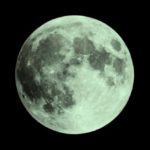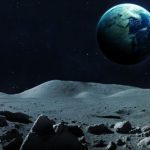 Animals
Animals  Animals
Animals  Weird Stuff
Weird Stuff 10 Weird Things People Used to Do at New Year’s
 Our World
Our World 10 Archaeological Discoveries of 2025 That Refined History
 Weird Stuff
Weird Stuff 10 Fascinating Facts You Might Not Know About Snow
 Miscellaneous
Miscellaneous Top 10 Things Crypto Was Supposed to Change & What Actually Did
 History
History 10 Huge Historical Events That Happened on Christmas Eve
 Music
Music 10 Surprising Origin Stories of Your Favorite Holiday Songs
 History
History 10 Less Than Jolly Events That Occurred on December 25
 Weird Stuff
Weird Stuff 10 Funny Ways That Researchers Overthink Christmas
 Politics
Politics 10 Political Scandals That Sent Crowds Into the Streets
 Animals
Animals 10 Species That Refused to Go Extinct
 Weird Stuff
Weird Stuff 10 Weird Things People Used to Do at New Year’s
 Our World
Our World 10 Archaeological Discoveries of 2025 That Refined History
Who's Behind Listverse?

Jamie Frater
Head Editor
Jamie founded Listverse due to an insatiable desire to share fascinating, obscure, and bizarre facts. He has been a guest speaker on numerous national radio and television stations and is a five time published author.
More About Us Weird Stuff
Weird Stuff 10 Fascinating Facts You Might Not Know About Snow
 Miscellaneous
Miscellaneous Top 10 Things Crypto Was Supposed to Change & What Actually Did
 History
History 10 Huge Historical Events That Happened on Christmas Eve
 Music
Music 10 Surprising Origin Stories of Your Favorite Holiday Songs
 History
History 10 Less Than Jolly Events That Occurred on December 25
 Weird Stuff
Weird Stuff 10 Funny Ways That Researchers Overthink Christmas
 Politics
Politics 10 Political Scandals That Sent Crowds Into the Streets
10 Mind-Blowing Revelations About Our Solar System
Considering the universe is almost 100 billion light-years across—due to inflation (not monetary) and whatnot—it’s amazing that some of the coolest discoveries and revelations are in our solar system.
That’s like crossing the world (many, many, many times) and then finding treasure in your own backyard. Maybe the proximity is part of the appeal because it means easier exploration. Plus, once someone invents a better nuclear drive, perhaps we’ll even be able to see some of these things personally.
Related: 10 Groundbreaking Space Missions That Flew under the Radar
10 Neptune and Uranus Don’t Look like You Think
Our mental image of Neptune and Uranus is wrong. Neptune and Uranus look much different from each other in all the images we’ve seen, but they’re actually really similar in color. The ice giants, as they’re called because they’re… well, icy and giant, are both blue. This is because of the same thing found in cow farts on Earth: methane. Methane absorbs other colors and reflects blue.
According to new research, these two giant frigid planets are both greenish blue, rather than a “deep azure” for Neptune and a “pale cyan” for Uranus. Why the discrepancy? The pictures we love came from Voyager 2, which snaps images in only one color. The numerous images in different colors are then combined into a composite, which wasn’t necessarily balanced to show off the planets’ true hues.
Neptune’s intense cobalt is also due to the images being enhanced to show a contrast between the planet and its clouds and storms. The original photos did have a caption explaining their “true” colors, but this caption went the way of the dodo.[1]
9 A Real Three-Body Problem in Our Own Solar System
The outskirts of our solar system may be even more interesting than the innards. Sure, the innards have the planets. But the outer area beyond Neptune is mysterious, maybe full of things like Pluto, and even perhaps a hidden haven for one more big planet—it’s like discovering you’ve had a sibling all this time?
Plus, there are Kuiper Belt Objects (KBOs), which are time capsules from when the solar system was a baby. Scientists have cataloged more than 3,000 of these icy space rocks. However, this is just a drop in an inky ocean because there are probably hundreds of thousands more, each more than 10 miles (16 km) across.
And considering the dinosaur-killing asteroid was about half that size, we better hope nothing nudges them toward Earth. Additionally, some of these ancient space rocks travel in pairs. Researchers have also found two rare triplets, including one called 148780 Altjira, which is 44 times farther away than the Sun at a whopping 3.7 billion miles.
Amazingly, the trio may have been together since the birth of our solar system, in a long-lasting threesome 4.5 billion years in the making.[2]
8 The Entire Moon Was Melted
New evidence helps show that our early Moon was a molten globe, a giant “magma ocean.”
Despite being our nearest celestial neighbor and the Sleepytime Bear’s best friend, the Moon still holds many secrets. Therefore, more and more projects and nations are exploring our satellite, including China’s Chang’e-6 mission, which recently achieved an astronomical first: sampling the far side of the Moon.
The sample it took from the Moon included some 2.823-billion-year-old basalt, a volcanic rock. This sample, in combination with samples from the near side of the Moon, suggests that the newborn Moon underwent global melting, turning it into a “vast magma ocean.” This must have been quite a sight to see—too bad it was impossible for anyone to see it.[3]
7 Martian Dust Wants to Kill You
Space wants us dead in pretty much every possible way. And if space itself doesn’t kill us on a Martian trip, the dust might do the job. Like Apollo astronauts learned, Moon dust was unavoidable. It got into the habitats. It caused coughing fits, sore throats, and irritated eyes.
On Mars, the regolith (cool word for dirt) is made up of dust particles just 4% the width of a human hair. They’re so small they’ll get everywhere, including astronauts’ blood, leading to terrible chronic diseases like cancers and lung disorders. The dust contains toxic metals and other harmful compounds that can cause hormonal imbalances.
Plus, the dust is both magnetic and electrostatic, so it sticks to everything. Spacefarers will need top-notch air filters, suits that clean themselves, and electrostatic repulsion devices to keep them free of dust. After all, there’ll be no medical office on Mars.[4]
6 Weird Fluorescent Earth Caves Are Like Extraterrestrial Environments
Europa and other tantalizing targets for alien life are prohibitively far away; luckily, there are weird glowing alien caves right here on Earth. South Dakota’s Wind Cave, and others like it, could be similar to places that may be hospitable to extraterrestrial life.
Whether such places are home to alien species is up in the air, no pun intended. However, one certainty is that cave systems are full of active and fossilized chemical processes. On Earth, they secretly occur beneath our feet, providing similar environments to those far and wide through the solar system.
All one needs is a black light to reveal the rich chemical tapestries hidden underground, revealing ancient features like pools of water from tens of thousands of years ago. Sure, scientists have to brave freezing waters and squeeze through 11-inch (28-cm) cracks, but that’s still more humanly hospitable than, say, accessing Europa’s dark ocean hidden beneath miles of ice crust. Who knows what a black light would reveal in an antediluvian alien ocean locked beneath miles of ice.[5]
5 Io has an Erupting Magma Pit Bigger than Lake Superior
Jupiter’s moon, Io, is like a sci-fi volcano planet. It’s larger than our Moon and constantly erupts, melts, and oozes lava from its 400 volcanoes, various fissures, and countless magma-holes.
Good thing we’ve got a live view of it, with the Juno spacecraft orbiting the Jupiter system since 2016. Recently, Juno snapped the strongest volcanic activity ever to rock Io, a hotspot greater than the Great Lakes. It’s bigger than Lake Superior and erupts with insane fury, releasing “six times the total energy of all the world’s power plants.”
What fuels the solar system’s most scorchingly active body? Jupiter itself. As Io whips around the big planet every 42.5 hours, it quickly gets closer and farther, being literally kneaded by Jupiter’s huge gravity.[6]
4 Mercury Has a Secret Comet-Like Tail
Mercury gets the short end of the solar stick, both literally and figuratively. First, it’s closest to the Sun and bombarded by unmitigated solar fury. Second, it’s (unjustly) considered the most boring of the planets. Yet our tiniest, most under-appreciated solar sibling secrets many remarkable features.
The most remarkably spectacular may be its tail because, yep, Mercury has a tail, just like a comet. As long exposures reveal, Mercury’s almost non-existent atmosphere contains a bit of sodium, which glows when excited by the Sun’s energy. This tail was discovered in 2001, about a decade-and-a-half after its existence was predicted in the 1980s.[7]
3 Chrysalis Was a Dead Moon That May Have Made Saturn’s Rings
Saturn’s rings are one of our solar system’s most brilliant treasures. So let’s take a second to thank the moon that (may have) died to make them possible. That moon is named Chrysalis because it blossomed into rings like a chrysalis morphs into a beautiful butterfly.
This exquisite destruction occurred around 160 million years ago, reminding us that cosmic timescales are head-spinning. The dead moon was the size of the living moon Iapetus, Saturn’s current third-largest satellite at just over 900 miles (1,448 km) across.
Chrysalis, the poor departed satellite, got pushed into Saturn by the gravity of Titan, our solar system’s second-largest moon at 3,200 miles (5,150 km) across. About 99% of the shredded Chrysalis fell into Saturn, and the piddling leftovers became the non-piddling rings that inspire our “oohs” and “wows” today.[8]
2 Hidden Ocean Swirling Around Uranus
Plenty of moons throughout our solar system probably hide hidden oceans and, just maybe, life, including the moons of Uranus, the beautiful greenish-blue orb that has become the butt of astronomy jokes.
The ice giant deserves more study, and hopefully, we will see a spacecraft visit sooner rather than later. However, the current space-exploration landscape is chaotic. Yet a future visit will check out the moons of Uranus to see if they have hidden oceans beneath their crusts. It depends on how much the moons wobble because if they hide an ocean, they’ll wobble more than if they’re mostly solid.
The sensitivity of science instruments is impressive, as this wobble will only cause a deviation of a few hundred feet in a moon’s orbit. Additional data on the moons’ gravity can determine the depth of the ocean and the thickness of the overlying ice crust.[9]
1 Mars’ Moons May Be Blown-Up Chunks of Mars
Unlike our own whopper of a satellite, Mars has two adorably tiny moons. According to NASA, which generally knows its stuff in such matters, Demios is just 7.5 miles (12 km) across while big brother Phobos has a 14-mile ((22.5 km) diameter. They’re so small that they are assumed to be captured asteroids that Mars decided to keep as pets one fated day long ago.
But the first interplanetary exploration by an Arabic nation, the UAE’s Emirates Mars Mission, is challenging the asteroid assertion. It was the closest fly-by in 40-odd years. The mission analyzed the Martian system, including the “more rarely observed Deimos,” in various types of light. It was found that Deimos is made of dark volcanic rock similar to Mars.
As a result, maybe the Deimos and Phobos aren’t captured asteroids but chunks of Mars that exploded into space after some huge thing collided with our barren red neighbor.[10]








